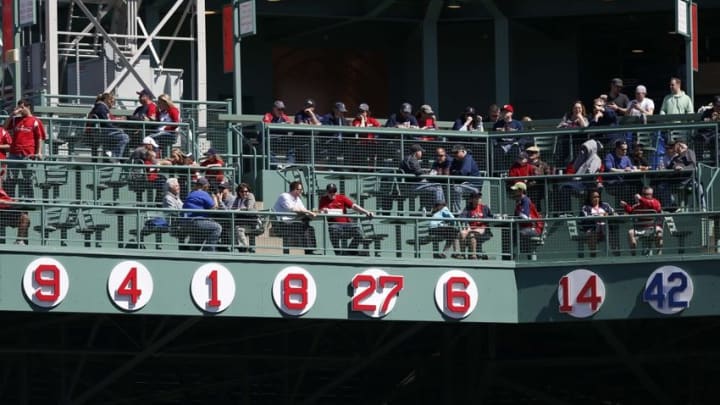A Sad Finish
Bob Veale was huge before it became the standard for pitchers. Veale – a left-hander – stood 6’6” and had some bulk in his years with Boston. Veale would be a perfect addition to today’s Red Sox over his propensity to issue walks – leading the National League four times.
By the time Veale arrived in Boston he was relegated to bullpen duty and in three seasons never started a game. Veale did manage 15 saves in his Boston years and compiled a 4-4 record and 3.45 ERA. In his Pittsburgh years, Veale reeled off seven seasons on ten or more wins while being a two-time All-Star.
More from Red Sox History
- Two notable Red Sox anniversaries highlight current organizational failures
- Contemporary Era Committee doesn’t elect any former Red Sox to Hall of Fame
- Johnny Damon calls Red Sox out, reveals hilarious way he skirted Yankees’ grooming policy
- Remembering the best Red Sox Thanksgiving ever
- Red Sox World Series legends headline 2023 Hall of Fame ballot
Deron Johnson had two shots with Boston late in his career. Johnson was what the Red Sox always are in need of – a power right-hand hitter and that was Johnson, but those days were gone when he arrived in Boston late in 1974 and hit a staggering .120.
Johnson signed with the other Sox and hit 18 home runs before being shipped to Boston in late September for the pennant push after Jim Rice went down. Johnson played in only three games, but hit .600 (6/10).
In 1976 it was back to Boston 1974 form as Johnson hit .132 with no home runs before being released.
The last dying embers of Dick McAuliffe’s career came to a skidding halt in Boston in 1975. McAuliffe had joined Boston in 1974 and provided infield stability and depth. That, however, stopped when it came to hitting as McAuliffe hit only .210. For 13 seasons McAuliffe was a mainstay in the Detroit Tigers infield and a three-time All-Star.
The 1975 season started with McAuliffe as manager – of the Bristol, Connecticut Red Sox where his team was in first place when the call went out from Boston. McAuliffe should have hung up. The skills were totally shot and McAuliffe hit .133 and made three errors in 13 chances before being released in early September. There is another connection and that goes back to 1967.
The Red Sox needed the Tigers to lose before they could claim a championship. The game finished with McAuliffe hit into a double-play for the Red Sox to be in. That was only the second DP McAuliffe hitting into all season in 675 plate appearances.
Bob Bailey came to Boston at the end of the 177 season and stayed for part of 1978. Again – a big right-handed bat that had lost its luster. Bailey hit only .191 and was soon gone.
Ted Sizemore was another ROY who came to Boston for two seasons (1979-80) and did little. A versatile infielder who hit .252 in his Boston stay. Sizemore now heads up the Baseball Assist Team to help former players, scouts, coaches and Negro League players.
